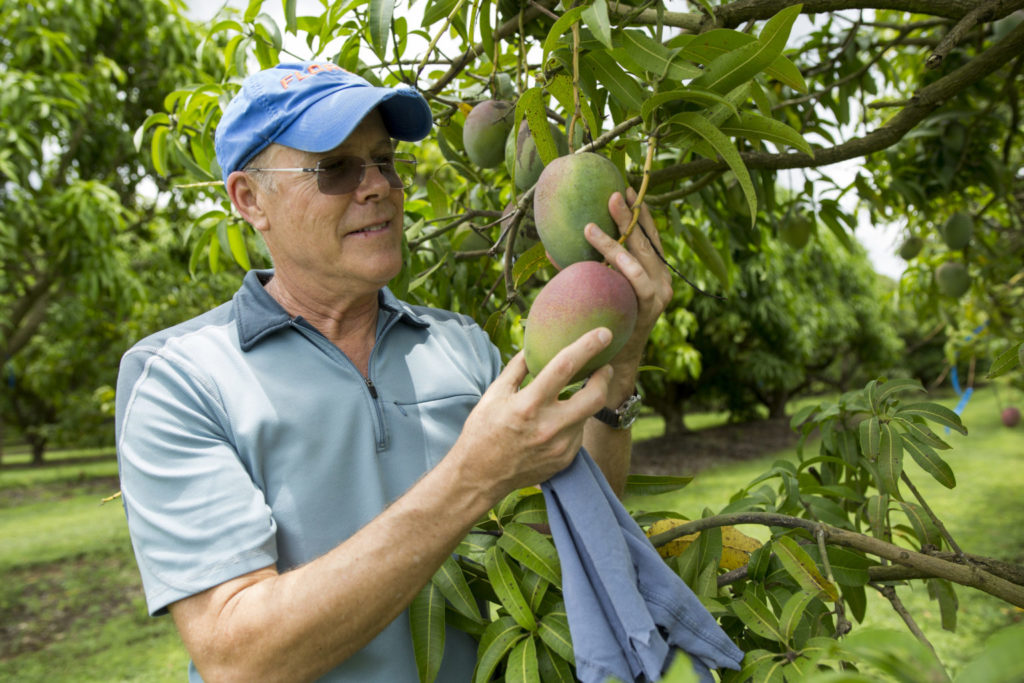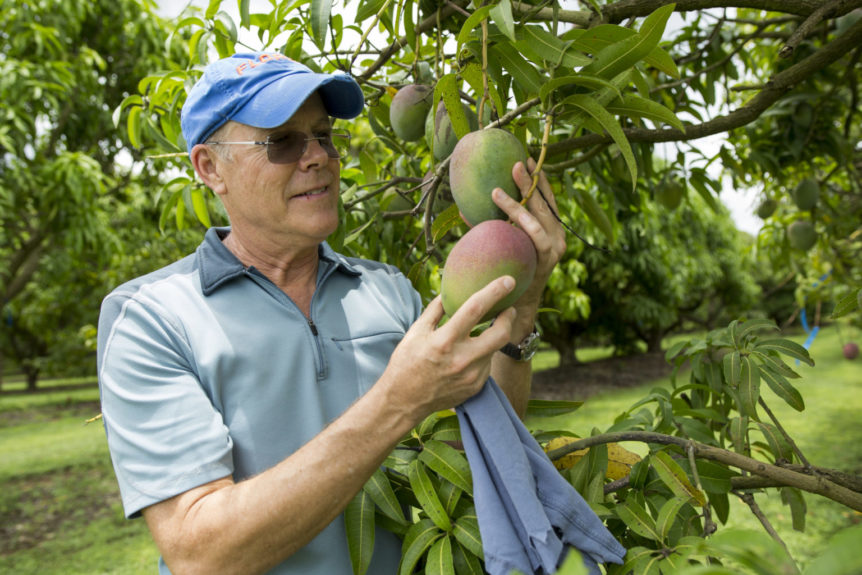By Clint Thompson
Florida’s mango industry has rebounded following a drastic production decrease following Hurricane Andrew in 1992.

UF/IFAS photo.
According to Jonathan Crane, University of Florida Institute of Food and Agricultural Sciences (UF/IFAS) professor and tropical fruit crop specialist, the industry hit its lowest point at about 1,000 acres but has more than tripled since. Fresh Florida-grown mangoes are producing high yields in a market where demand is also high.
“There’s a huge interest in different varieties of mangoes, varieties of mangoes that we would call specialty mangoes. The big players in the international trade are not growing them and probably not going to grow them, so these are very different colors, flavors, textures, aromas,” Crane said.
Crane added that many mango growers are not resorting to the usual channels to market their fruit. They are not depending on packinghouses as much.
“They do their own marketing, either to smaller size chain grocery stores or specialty stores or online stores. They’re getting good prices for them,” Crane said. “Enthusiasm for these varieties from Florida is nationwide. These guys ship through the mail, mangoes.”
Hurricane Andrew/NAFTA
Production hasn’t always been this way, however. The hurricane was one of two significant events that impacted Florida production.
“Well two things happened. One was Hurricane Andrew in 1992. It cut the acreage in half. Then in 1994, NAFTA was passed which allowed Mexico, Ecuador and the rest of the central and south America to export mangoes to the U.S.,” Crane said. “Our production practices and costs are much higher than they are because in Mexico and these other places, they’re growing them basically in desert areas. They didn’t have the fungal issues that we have, so we had to spray our trees 12 to 24 times a year. They would spray maybe once. It was an economic disadvantage for us.”
On the Rebound
Florida’s mango acreage declined to its lowest point at about 1,000 acres, down from 7,000 before Andrew and then 3,000 after the storm. But that is in the past, and the industry’s future is much brighter. Growers are capitalizing on the 50-plus varieties being produced; selling from the farm, selling to stores or through the internet. Interest is peaking, with more than 5,000 people attending this year’s mango festival in Palm Beach County.
“The good thing about Florida is that the USDA, university, botanical gardens, have collections of mangoes,” Crane said. “The acreage has gone back up to about 3,600 acres, maybe more.”










